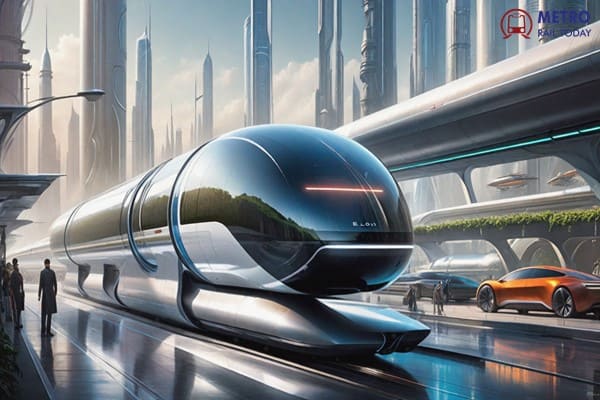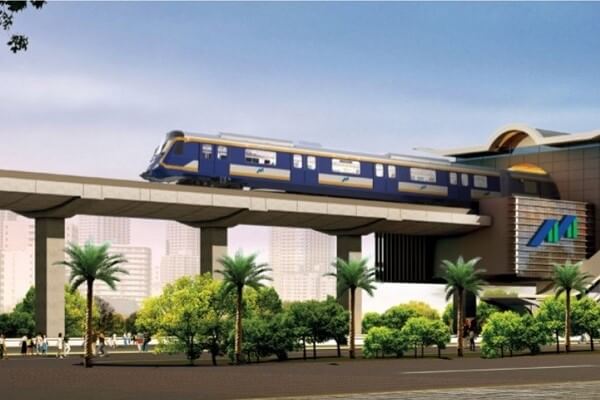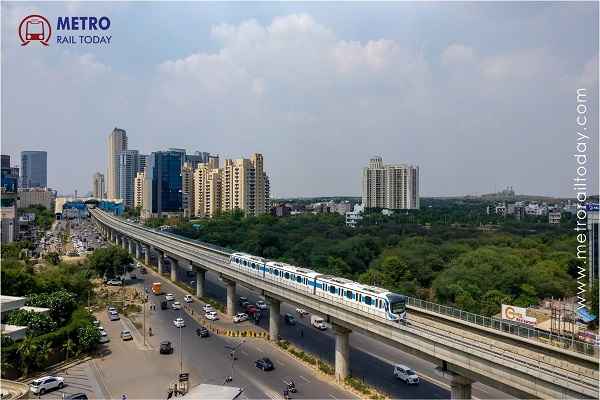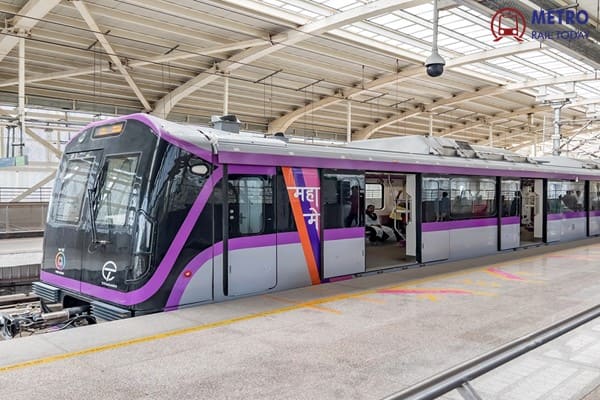 Adani Group bags ₹16.44 Billion Pune Metro Contract for Swargate–Katraj Underground Section
Adani Group bags ₹16.44 Billion Pune Metro Contract for Swargate–Katraj Underground Section MEMCO and United Trans join hands to strengthen Passenger Rail Solutions across Middle East
MEMCO and United Trans join hands to strengthen Passenger Rail Solutions across Middle East Texmaco Rail bags ₹78 Crore Orders to strengthen India’s Rail Electrification Drive
Texmaco Rail bags ₹78 Crore Orders to strengthen India’s Rail Electrification Drive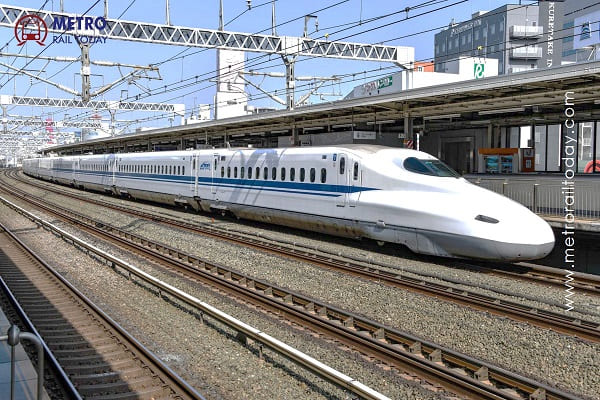 Otis India to Supply 55 Elevators and Escalators for Mumbai–Ahmedabad High-Speed Rail Corridor
Otis India to Supply 55 Elevators and Escalators for Mumbai–Ahmedabad High-Speed Rail Corridor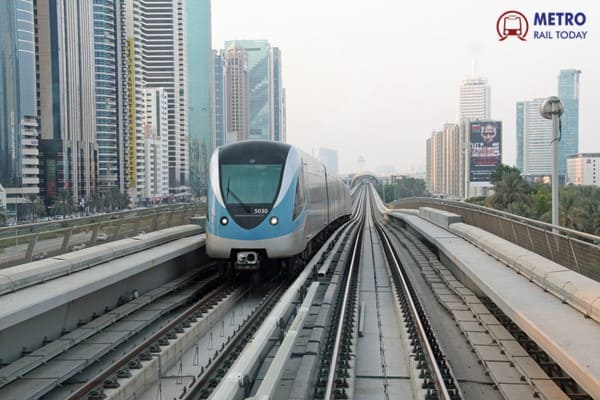 Dubai RTA sets five strategic priorities to strengthen Smart Mobility and Infrastructure Growth
Dubai RTA sets five strategic priorities to strengthen Smart Mobility and Infrastructure Growth MRT Corp to finalise contractor for construction of 29.5 km Penang LRT Mutiara Line
MRT Corp to finalise contractor for construction of 29.5 km Penang LRT Mutiara Line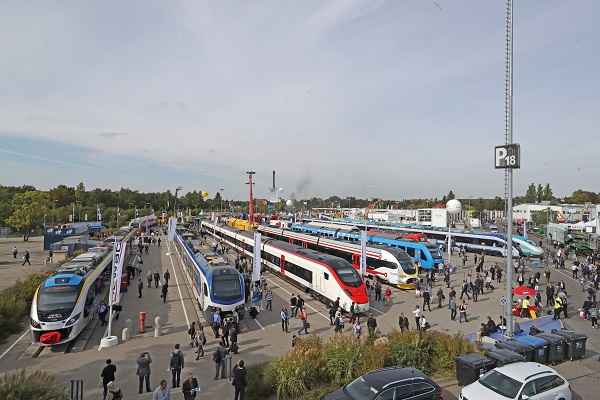 Global Rail Industry to Reach $436Bn by 2030 - Digitalization and Sustainability Lead the Track
Global Rail Industry to Reach $436Bn by 2030 - Digitalization and Sustainability Lead the Track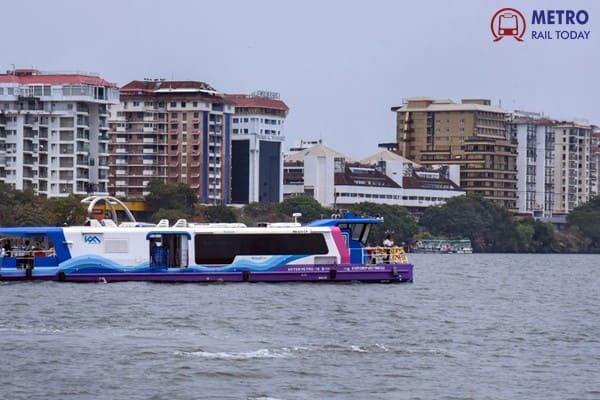 Delhi Metro enters Maritime Logistics Sector with Deendayal Port e-FTS Project
Delhi Metro enters Maritime Logistics Sector with Deendayal Port e-FTS Project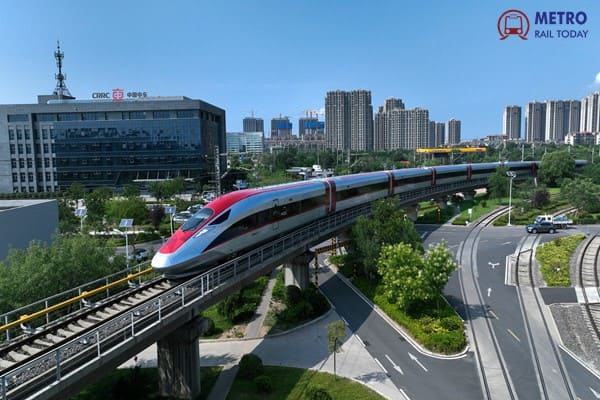 China’s CR450 Bullet Train hits 450 kmph, Becomes fastest Train in the World
China’s CR450 Bullet Train hits 450 kmph, Becomes fastest Train in the World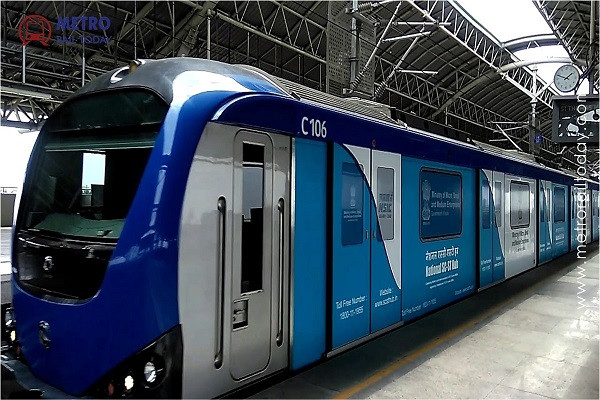 Faiveley signs ₹48.33 cr contract to install Anti-Drag Safety System in Chennai Metro Phase 1 Trains
Faiveley signs ₹48.33 cr contract to install Anti-Drag Safety System in Chennai Metro Phase 1 Trains
Revolutionizing India's Passenger Transport Sector-Perspectives on Technological Advancements

India, with its vast and diverse population, is currently undergoing a transformative shift in its passenger transport sector, driven by technological innovations that are fundamentally altering how people travel within the country. This article explores the dynamic landscape of India's passenger transport, offering a comprehensive perspective on the technological advancements that are reshaping modes of transportation like buses, trains, and metros. As India's urban centres expand, the demands on transportation infrastructure increase, leading the nation to embrace innovative solutions in response to challenges such as congestion, pollution, and accessibility. From the bustling streets of Delhi to the serene landscapes of southern India, this exploration delves into the evolving world of passenger transport, highlighting the technologies and diverse viewpoints propelling India toward a more connected, sustainable, and efficient future. Throughout this journey, we examine the pivotal role of technology in shaping India's passenger transport sector, providing insights into ground-breaking advancements and the diverse perspectives that together form the blueprint for revolutionizing the nation's mobility infrastructure.
Technological Innovations in Buses
In buses, India has brought about significant improvements in the efficiency, sustainability, and passenger experience of public transportation. The adoption of electric buses, for instance, has reduced emissions and environmental impact, making urban transportation more eco-friendly. Smart bus systems, equipped with real-time GPS tracking and passenger information systems, have enhanced the reliability and convenience of bus travel. Moreover, the Internet of Things (IoT) has enabled predictive maintenance, ensuring buses remain in optimal condition, reducing downtime, and improving service reliability. These innovations collectively contribute to creating a modern and efficient bus network that meets the evolving needs of commuters while addressing environmental concerns.
Advancements in Indian Railways
It has ushered in a transformative era of rail transportation, bolstering connectivity and efficiency. The development of high-speed rail networks is revolutionizing long-distance travel, offering passengers swift and comfortable journeys between major cities. Digital ticketing and passenger information systems have simplified the booking process and enhanced the travel experience. Sustainability initiatives, such as electrification and the adoption of cleaner technologies, demonstrate a commitment to reducing the environmental impact of rail transport. These advancements collectively position Indian Railways as a more modern, environmentally conscious, and interconnected mode of transportation, catering to the evolving needs of a rapidly growing nation.
Metamorphosis of Indian Metro Systems
It signifies a profound transformation in urban public transportation. Expanding metro networks in major cities offer an efficient solution to alleviate urban congestion, reduce traffic pollution, and provide a reliable mode of commuting. The integration of autonomous trains and advanced signalling systems ensures smoother and safer operations. Last-mile connectivity options, such as bike-sharing and pedestrian-friendly infrastructure, enhance the convenience of using metro systems. These developments collectively herald the evolution of metro networks into an integral part of modern urban mobility, catering to the needs of growing urban populations while promoting sustainable and efficient transportation solutions.
Mobility as a Service (MaaS)
In India, It represents a transformative approach to urban transportation, streamlining diverse mobility options into a single, user-centric platform. “MaaS” platforms, often in the form of mobile apps, enable commuters to plan, book, and pay for various modes of transportation seamlessly, including buses, trains, metros, ride-sharing, and more. These platforms are simplifying the travel experience, reducing congestion, and enhancing accessibility. Case studies in Indian cities demonstrate the success of “MaaS” in improving transportation efficiency and reducing the reliance on private vehicles, thereby contributing to congestion reduction and environmental sustainability. However, challenges such as integrating multiple stakeholders, ensuring data privacy, and addressing the needs of diverse user groups remain essential considerations as “MaaS” continues to evolve in the Indian context.
Data-Driven Transportation of India
Data-driven transportation in India harnesses the power of advanced data analytics and technology to optimize and revolutionize the transportation sector. It involves the collection and analysis of real-time data from various sources, such as traffic sensors, GPS, and passenger information systems, to enhance traffic management, improve safety, and optimize routes. Artificial intelligence (AI) and machine learning algorithms are deployed for predictive analysis, allowing for more efficient resource allocation and infrastructure planning. Data-driven transportation also aids in the development of intelligent transportation systems (ITS), supporting smoother traffic flow, reducing congestion, and enhancing overall transportation efficiency. While these advancements hold immense promise for India's transportation ecosystem, ensuring data privacy and security, as well as integrating diverse data sources and stakeholders, remain critical challenges for the successful implementation of data-driven transportation solutions.
Environmental sustainability
In India's passenger transport sector, Environmental sustainability is an imperative response to the country's pressing environmental challenges. India faces issues like air pollution and greenhouse gas emissions due to the high reliance on fossil fuel-powered vehicles. To mitigate these impacts, there is a growing shift toward adopting electric and hybrid vehicles, as well as enhancing public transportation systems with eco-friendly technologies. Initiatives promoting the use of renewable energy sources for transportation, such as electric buses and trains, are gaining momentum. Additionally, urban planning increasingly emphasizes sustainable practices, such as creating pedestrian-friendly zones and expanding cycling infrastructure. These efforts align with India's commitment to addressing climate change and reducing its ecological footprint while improving the overall quality of life for its citizens.
The Future of Autonomous Vehicles in India
It represents a significant paradigm shift in the country's transportation landscape. As India grapples with challenges like traffic congestion and road safety, autonomous vehicles hold promise in revolutionizing urban mobility. Autonomous buses, taxis, and delivery vehicles could reduce traffic, enhance road safety, and offer convenient and efficient transportation solutions. However, the path to widespread adoption of autonomous vehicles in India faces hurdles, including infrastructural upgrades, regulatory frameworks, and public acceptance. Despite these challenges, the potential benefits, including reduced accidents and congestion, improved traffic management, and enhanced accessibility, make autonomous vehicles a compelling prospect for the future of transportation in India.
Public-Private Partnerships (PPPs) in Transport
India's passenger transport sector, Public-Private Partnerships has involved collaborative endeavours between government authorities and private enterprises to enhance, modernize, and manage transportation infrastructure and services. These partnerships have played a pivotal role in vital projects, including the development of metro rail networks, highway construction, and urban transit initiatives. PPPs facilitate capital investment, infusion of advanced technology, and operational efficiency from the private sector, while harnessing government resources and regulatory oversight. Their primary goal is to meet the increasing demand for efficient and sustainable transportation solutions, encompassing the design, construction, and operation of public transit systems, thus bolstering connectivity, alleviating congestion, and offering commuters enhanced mobility options. The success of PPP implementation depends on well-structured agreements, transparent governance, and alignment with the nation's broader transportation and environmental objectives.
In the Indian bus sector, a gross cost contract involves a government authority or public transportation agency paying a fixed, predetermined fee to a private operator responsible for operating and maintaining bus services. Under this arrangement, the operator manages transportation services, including bus operation, fleet maintenance, and performance standards compliance, with the government or authority assuming revenue risk by guaranteeing a fixed payment regardless of actual revenue generated. This contractual model ensures the availability of public transportation services, particularly in urban areas, while maintaining service quality and reliability.
In the Indian railway sector, gross cost contracts are utilized for outsourcing specific railway services or managing particular railway routes. These contracts enable private companies like South Star Rail and SRM PR Global Railway to operate passenger trains on designated railway lines under the Bharat Gaurav Scheme, as detailed below. The first private train in India, launched under this scheme, embarked on its inaugural journey from Coimbatore North Station to Sainagar-Shirdi on June 14, 2022, operated by South Star Rail, offering passenger amenities and VIP darshan access at the Shirdi-Sai Baba Temple. This initiative aligns with the Bharat Gaurav scheme, allowing private companies to lease trains for theme-based tourism circuits. Despite opposition and protests, the maiden journey witnessed approximately 1100 passengers. Concurrently, SRMPR Group introduced the Train Service, intending to operate four 14-coach tourist trains, providing amenities such as Wi-Fi and CCTV surveillance, serving spiritual and tourist destinations across India. This marks their foray into the railway sector and expansion in passenger transport and tourism, while the government or railway authority retains control over the broader railway network.
The Human Factor in Passenger Transport
The human factor in passenger transport encompasses several crucial aspects that contribute to the efficiency, safety, and inclusivity of transportation systems:
- Skilled Workforce Development: Skilled and trained personnel are essential for the smooth operation and maintenance of passenger transport systems. This includes train operators, bus drivers, maintenance crews, ticketing staff, and other roles. Workforce development programs ensure that these professionals receive proper training, acquire the necessary skills, and stay up-to-date with evolving technologies. A skilled workforce is crucial for safe and efficient transport services.
- Passenger Education and Behavior: Educating passengers about safe and responsible behaviour while using public transportation is vital. This includes awareness campaigns on topics such as following safety protocols, respecting fellow passengers, and understanding emergency procedures. Educated passengers contribute to a safer and more pleasant travel experience for everyone.
- Ensuring Inclusivity in Transportation: Inclusivity in passenger transport means making transportation services accessible and accommodating for all individuals, regardless of their age, abilities, or special needs. This involves designing transportation infrastructure with features like ramps, elevators, and designated seating for individuals with disabilities. It also includes providing information and services in multiple languages and formats to cater to diverse communities.
Connectivity and entertainment
Connectivity are two important aspects of modern passenger transport that enhance the overall travel experience:
1. Connectivity:
- Digital Connectivity: Passengers today expect seamless digital connectivity during their journeys. This includes access to Wi-Fi, mobile networks, and high-speed internet to stay connected with work, family, and friends.
- Real-Time Information: Travelers rely on real-time information about their journey, including updates on departure times, delays, and service disruptions. Access to this information through mobile apps or on-board systems is crucial for a smooth experience.
- Payment and Ticketing: Modern passenger transport systems offer digital payment options and contactless ticketing, making it convenient for passengers to purchase tickets and pay for services using smartphones or smart cards.
- Intermodal Connectivity: Transport hubs are designed to provide easy transitions between different modes of transport, such as buses, trains, and metros. Integrated ticketing and schedules facilitate hassle-free transfers for passengers.
2. Entertainment:
- On-Board Entertainment: Longer journeys, such as train rides or bus trips, often include on-board entertainment systems. These systems can offer a variety of entertainment options, including movies, music, games, and even live streaming.
- Personal Devices: Passengers frequently use their personal devices like smartphones and tablets for entertainment. Travellers can stream movies, listen to music, read e-books, or play games during their journeys, thanks to mobile apps and in-flight or on-board Wi-Fi.
- In-Transit Services: Some modern transport systems offer additional services like in-flight magazines, audio channels, or video screens with travel-related content to keep passengers engaged and informed.
- Live Events: In some cases, transport providers may offer live entertainment or events on board, such as live music performances or educational talks, to enhance the travel experience.
Key Takeaways
- Technological Evolution:India's passenger transport sector is undergoing a significant technological evolution, driven by innovations in buses, trains, and metro systems. These advancements are reshaping the way people travel within the country.
- Urbanization and Growth:As India's population urbanizes and its economy expands, there is a growing demand for efficient, sustainable, and interconnected mobility solutions to address challenges like congestion and pollution.
- Buses: Technological innovations in buses include the adoption of cleaner fuels, smart ticketing systems, and real-time tracking, making public buses more efficient, eco-friendly, and user-friendly.
- Trains: Indian railways are undergoing modernization with initiatives like high-speed rail, improved safety systems, and enhanced passenger amenities. The introduction of dedicated freight corridors is also boosting efficiency.
- Metros: Metro systems in India are expanding rapidly, with new routes and improved connectivity. Investments in metro technology and infrastructure are enhancing the urban transportation landscape.
- Mobility as a Service (MaaS): MaaS platforms are transforming how people plan and pay for their journeys, offering integrated and convenient options for multi-modal transportation.
- Data-Driven Transport: Data analytics and digital solutions are enabling better management of transportation networks, leading to improved reliability and customer experiences.
- Environmental Sustainability: There is a growing emphasis on sustainability, with a shift towards cleaner fuels, electric vehicles, and eco-friendly practices in the passenger transport sector.
- Inclusivity: Efforts are being made to ensure that passenger transport services are accessible and accommodating for all individuals, regardless of their age, abilities, or special needs.
- Public-Private Partnerships (PPPs): Collaborative efforts between government authorities and private enterprises are playing a crucial role in developing, modernizing, and operating transportation infrastructure and services.
- Future Prospects: India's passenger transport sector will continue to evolve, adapting to the changing needs of its urbanizing population. Innovation, collaboration, and a commitment to improving the quality of life for citizens are driving a brighter and more connected future in passenger transport.
In conclusion, India's passenger transport journey has seen remarkable growth and transformation, evolving from rudimentary modes to modern, interconnected systems. Technological advancements, infrastructure investments, and sustainability efforts have been pivotal in this evolution. Looking ahead, the integration of cutting-edge technologies like autonomous vehicles and data-driven solutions promises to revolutionize transport. Initiatives such as Mobility as a Service (MaaS) and Public-Private Partnerships (PPPs) will enhance efficiency and inclusivity. However, it's crucial to prioritize the human factor, including workforce development, passenger education, and inclusivity, to ensure safety and accessibility. As India continues to urbanize and its population grows, innovation and collaboration will shape a brighter and more connected future in passenger transport, improving the overall quality of life for its citizens.





